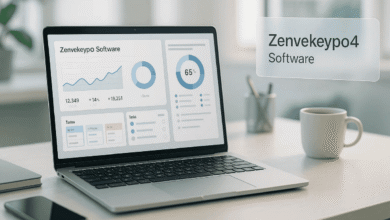Thejavasea.me leaks aio-tlp370: A Deep Dive into the Mysterious Data Exposure

The online world is no stranger to leaks, data breaches, and security incidents. In recent months, one particular topic has gained significant attention across digital communities and cybersecurity forums: thejavasea.me leaks aio-tlp370. This mysterious event reportedly involves a large-scale leak of sensitive digital assets, including software components, configuration files, and developer notes. As discussions continue to unfold, many are questioning the origin, authenticity, and implications of this leak.
Understanding what thejavasea.me leaks aio-tlp370 represents and why it matters requires looking closely at its context, contents, and consequences for users and organizations worldwide.
The Background of thejavasea.me leaks aio-tlp370
Thejavasea.me is reportedly a website known for publishing various digital leaks, source code repositories, and confidential files that often appear on underground networks. The recent incident titled thejavasea.me leaks aio-tlp370 revolves around an alleged data breach where an archive named aio-tlpfullv7.3.zip, estimated to be around 1.2 GB, surfaced online in March 2025.
The file was said to contain a collection of materials from a project called AIO-TLP370, which allegedly stood for “All-In-One Transparent Log Processor.” Reports claim that this software was designed for log analysis, monitoring, and threat detection — tools often used in cybersecurity frameworks and enterprise environments.
What Was Allegedly Included in the Leak
Various unconfirmed reports suggest that thejavasea.me leaks aio-tlp370 contained several sensitive digital elements, such as:
- Source code files for AIO-TLP370
- Developer notes and roadmap documents
- Configuration files containing cloud service credentials and API keys
- System scripts and deployment guides
- Security playbooks and test logs
While the authenticity of these files remains under debate, cybersecurity observers believe that if genuine, such a leak could enable malicious actors to exploit vulnerabilities in similar systems or replicate the software for unauthorized use.
Why the Leak Gained So Much Attention
Thejavasea.me leaks aio-tlp370 became a hot topic due to the scale and complexity of the exposed data. Unlike traditional leaks that involve user credentials or customer databases, this one allegedly revealed operational-level tools and backend frameworks. Such leaks are significant because they can expose not just data, but the underlying mechanisms that secure enterprise infrastructures.
The case also drew attention because thejavasea.me has been associated with other controversial releases in the past, creating a reputation as a hub for unverified yet impactful data exposures. The buzz surrounding this specific leak reflects a growing trend of entire software ecosystems being compromised instead of isolated files.
The Possible Origins of the Leak
No official confirmation has been made regarding the source of thejavasea.me leaks aio-tlp370. However, some theories suggest that the data may have come from an internal breach, a misconfigured cloud repository, or even deliberate insider activity. Such leaks often result from inadequate cybersecurity hygiene or errors in access management.
Security researchers emphasize that even minor misconfigurations, such as exposed public GitHub repositories or unsecured development servers, can lead to massive leaks like this one. If the aio-tlp370 project was indeed active in enterprise environments, its exposure could have far-reaching consequences.
Implications of thejavasea.me leaks aio-tlp370 for Cybersecurity
Thejavasea.me leaks aio-tlp370 serves as a reminder of the evolving threat landscape in the digital era. Here are some of the major implications highlighted by experts:
- Supply Chain Vulnerabilities: Leaks involving backend software can compromise multiple organizations that rely on the affected tool.
- Reputational Damage: Even unverified leaks can damage the credibility of developers and companies associated with the project.
- Credential Exposure: If API keys or cloud credentials were included, attackers might use them for unauthorized access to systems.
- Replication of Tools: Cybercriminals can modify or repurpose leaked software to launch further attacks.
- Legal and Ethical Concerns: Hosting, sharing, or even downloading leaked materials can lead to legal consequences.
The Role of TheJavaSea.me in Spreading Leaks
Thejavasea.me has developed a name for itself as a platform that circulates leaked data, often sourced from dark web or underground forums. The site’s operators typically claim to promote transparency or freedom of information, though in practice, it has become a controversial entity due to the questionable legality of its content.
In the case of thejavasea.me leaks aio-tlp370, the platform’s involvement has reignited discussions about whether such sites should be regulated or taken down to prevent the uncontrolled spread of sensitive data. While some advocate for openness, others argue that these leaks endanger cybersecurity and privacy.
How Organizations Can Protect Themselves
Thejavasea.me leaks aio-tlp370 highlights the importance of proactive cybersecurity measures. Businesses and developers can take several steps to mitigate risks associated with data leaks:
- Regularly audit all repositories and databases for potential exposure.
- Implement multi-layer authentication for critical systems.
- Encrypt sensitive information and rotate credentials frequently.
- Train employees about the importance of digital hygiene and insider threat prevention.
- Use monitoring tools to detect any unauthorized data movement.
These preventive measures can reduce the likelihood of incidents similar to thejavasea.me leaks aio-tlp370 affecting their own infrastructure.
Ethical and Legal Aspects of Discussing Leaks
Writing or reporting about leaks like thejavasea.me leaks aio-tlp370 requires caution. While such topics are of public interest, they involve ethical boundaries and potential legal risks. Sharing or linking to leaked files may constitute a violation of data protection laws in many jurisdictions. Responsible coverage focuses on analysis and awareness rather than direct distribution of stolen data.
By highlighting lessons from such events, content creators can educate readers on cybersecurity awareness without crossing ethical lines.
Lessons Learned from the Incident
Thejavasea.me leaks aio-tlp370 serves as a powerful lesson about modern cybersecurity realities. It shows how even a small oversight can lead to a cascade of data exposure, affecting multiple stakeholders. Whether or not the contents of the leak are entirely genuine, the case underscores a growing issue: the need for stricter data protection policies and more transparent disclosure procedures.
Conclusion
Thejavasea.me leaks aio-tlp370 remains one of the most talked-about digital incidents of the year, sparking debates over cybersecurity, ethics, and data protection. It exemplifies the delicate balance between transparency and privacy in the online world. Regardless of its authenticity, the story serves as a reminder that every organization — from small startups to large enterprises — must take proactive steps to secure their data and safeguard their digital ecosystems.
The digital realm continues to evolve, but thejavasea.me leaks aio-tlp370 stands as a warning that even one vulnerability can expose a web of interconnected systems, leading to consequences that ripple far beyond a single event.
Frequently Asked Questions (FAQs)
1. What is thejavasea.me leaks aio-tlp370 about?
It refers to an alleged data leak from the site TheJavaSea.me involving software components, configuration files, and developer materials from a project named AIO-TLP370.
2. When did thejavasea.me leaks aio-tlp370 occur?
The leak reportedly surfaced online in March 2025, featuring an archive file named aio-tlpfullv7.3.zip.
3. Why is thejavasea.me leaks aio-tlp370 significant?
It’s considered significant because it allegedly includes backend tools and configuration data, not just user credentials, potentially impacting system security.
4. Is the data from thejavasea.me leaks aio-tlp370 verified?
No official verification has been made, and much of the available information remains speculative or unconfirmed.
5. What can organizations learn from thejavasea.me leaks aio-tlp370?
The key takeaway is the importance of strong cybersecurity measures, regular audits, and strict access control to prevent similar incidents.




